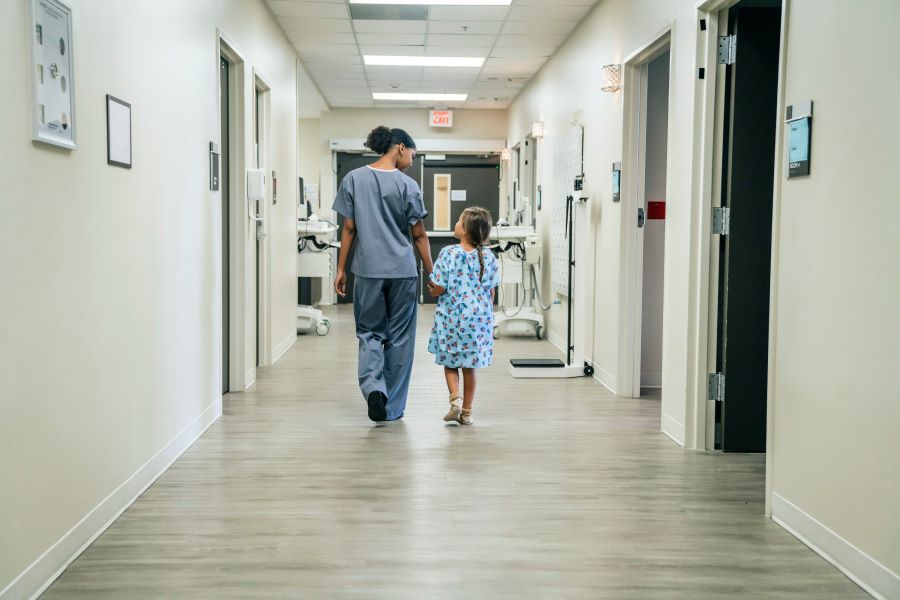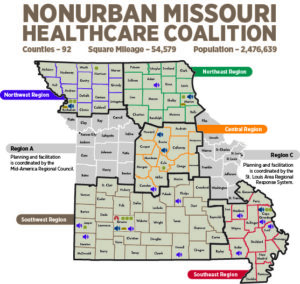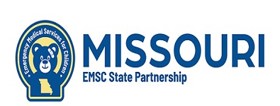- patient warming device
- intravenous blood/fluid warmer
- restraint device
- weight scale (preference locked) in kilograms
- tool or chart that incorporates both weight and length to assist in determining equipment size and correct drug dosing, such as a length-based resuscitation tape
- pain-scale – assessment tools appropriate for age
- anesthetics (including topical)
Expert

Keri Barclay
Actions
Type
Topic
- Preparedness and Response
- Process Improvement
- Quality and Safety
- Safety
Tags
Integrating Preparedness to Improve Organizational Performance
It is important for all hospitals to be prepared to provide pediatric care and to have the current supplies in the emergency department to treat this population. During times of surge, hospitals that do not typically care for pediatric patients may have to due to health care systems being overwhelmed. Additionally, hospitals that do care for pediatric patients may have to care for higher acuity patients than they typically care for.
Strategies & Tactics
General
- Pediatric Pandemic Network: Pediatric Surge Recommendations and Resources
- ensure privileges for physicians to care for pediatric patients if needed
Staffing Strategies
- pyramid staffing
- training up clinicians
- utilizing nurse leadership to staff floor
- modified nurse-to-patient ratios
Increasing Pediatric Bed Capacity
- repatriating patients/reverse surge
- ASPR TRACIE: Considerations for Use of Temporary Surge Sites for Managing Seasonal Patient Surge
- utilize nontraditional bed space
Waivers
To obtain a Section 1135 waiver, the following four requirements must be met.
- The president declares an emergency or disaster under the Stafford Act or the National Emergencies Act.
- The secretary of the U.S. Department of Health and Human Services declares a public health emergency under Section 319 of the Public Health Service Act.
- The secretary of HHS invokes authority under Section 1135 of the Social Security Act and authorizes the Centers for Medicare & Medicaid Services to waive sanctions for certain EMTALA violations that arise as a result of the circumstances of the emergency.
- The hospital in the affected area implements its hospital disaster protocol.
Variances
- There are no prerequisites for requesting a variance from the Missouri Department of Health and Senior Services.
- When there is a state declaration of emergency, DHSS may issue variances on a blanket basis.
- When there is no state declaration, hospitals may request a variance from DHSS. The requests must be in writing to DHSS at HospitalLicensure@health.mo.gov.
Additional Resources
MHA offers additional guidance on variance and waiver processes. A webinar recording also is available.
Clinical Preparedness Guidelines
Hospitals should follow and develop pediatric-specific facility guidelines, and at a minimum, reference established treatment paths and standards in a Pediatric Emergency Preparedness policy. Common injuries, illnesses and surge clinical care guidelines are available for ease of access.
Children’s Mercy:
- All Clinical Practice Guidelines, Care Process Models and Enhanced Recovery After Surgery Pathways
- Appendicitis Care Process Model
- Asthma Exacerbation Clinical Practice Guideline
- Bronchiolitis Clinical Practice Guideline
- Community-Acquired Pneumonia Clinical Practice Guideline
- Croup Care Process Model
- Pharyngitis Clinical Practice Guideline
Cardinal Glennon Children’s Hospital
- All Clinical Practice Guidelines
- Inpatient Bronchiolitis Management
- Wheezing in Children < 2 Years of Age
- Respiratory Pathogen Panel by NP Swab Ordering Guideline
- Pharmacologic Therapy in Patients with SARS-CoV-Infection (COVID-19)
Saint Louis Children’s Hospital
trekk and EIIC Resources
- Pain Treatment Recommendations
- Procedural Pain Management
- Status Epilepticus Recommendations | Algorithm
- Care of the Agitated Patient | Medication Dosing Recommendations
- Suicide Risk Screening & Assessment
Pediatric Trauma Society
Society of Critical Care Medicine
- Pediatric ICU Admission, Discharge and Triage Practice Statement and Levels of Care Guidance
- Pediatric Surviving Sepsis Campaign
Life Support Learning Center at UVA Health
Patient CareLink
American Academy of Orthopaedic Surgeons
Western Region Burn Disaster Consortium
OPEN Pediatrics
Supply and Equipment
Suggested for Pediatric Care
Supply list provided by the Missouri Emergency Medical Services for Children.
Ancillary and Wraparound Services for Pediatrics
Pharmacy
- MHA: Weight-Based Dosage Calculation Workbook (Excel)
Infection Prevention
Radiology
- Image Gently: Radiology Protocols
- American College of Radiology: Practice Parameters and Technical Standards
Child Life
- National Library of Medicine: Minimizing Pediatric Healthcare-Induced Anxiety and Trauma
Reunification Best Practices
- Create a pediatric “safe space” for pediatric populations that require reunification and have been discharged. Designate a holding area and staff to supervise and support children who have been separated from their families.
- Develop a plan to secure the safety of children until they can be reunited with a legal guardian, appropriate family members or governmental agency.
- Consider using this location for children of staff who require assistance with child care to work.
- Consider an identification system similar to the newborn nursery for parents and children who may both require treatment.
- Take a photograph as soon as possible upon arrival to aid in identification.
- Notify authority as soon as possible for pediatric patients arriving without a legal guardian to assist in reunification.
- Ensure early collaboration when utilizing a school reunification plan and/or community reunification plan. When possible, use existing reunification tools provided by the Red Cross, law enforcement and Division of Family Services.
- Utilize a toolkit for pediatric reunification planning, such as the American Academy of Pediatrics’ Family Reunification Following Disasters: A Planning Tool for Health Care Facilities.





















